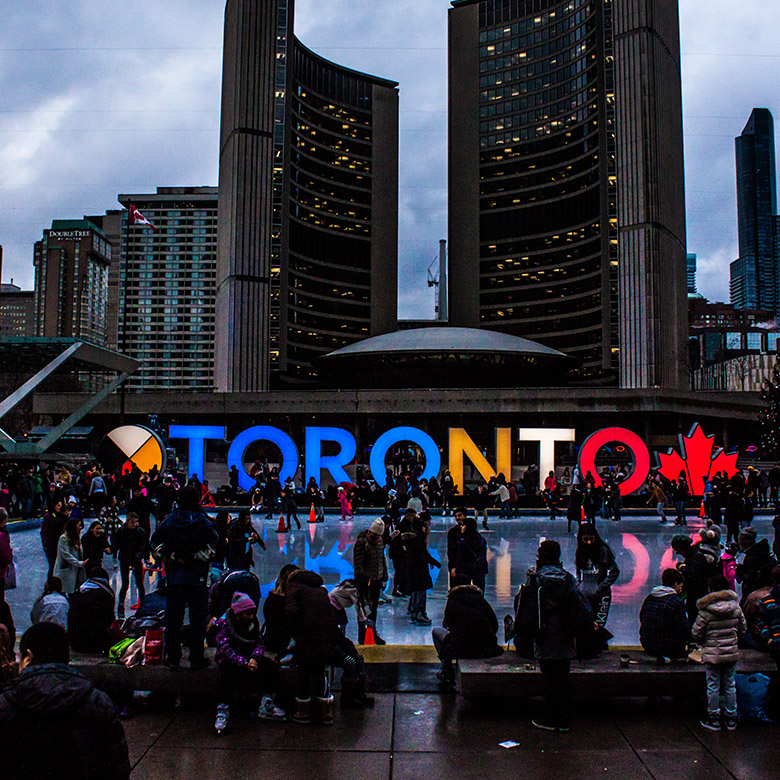
Australia
June 28, 2018
Canada
December 20, 2019The United States of America is the most popular and famous place to complete your education at the top most level. Consistently, the greater part a million students visit the United States of America (USA) to study and get a chance to gain from the best of the educational institutes of USA and obtain the learning at various levels.
Education System In the USA
The education system in the USA is unique as students are offered with the best set of education options from all over the world. It is important for a student to complete their 12 years of education i.e. primary as well as secondary for joining a university or college.
Your schooling must have been completed in these two schools i.e. public school or private school. The schooling which has been completed outside the United States of America is equally valid for students to enter a university or college for taking the American education benefits.
Being the Best Education Consultant for Study in the USA, Emerge Enterprises gives the best career counseling and visa consultation that helps students to choose the right and appropriate course in the university or college that suits their budgets. This will help a student to make his career in the right ways and get the best education for getting the best job after studies.
Our team of consultants at Emerge Enterprises is trained and well studied to provide the best Visa and Education consultancy for students who are aspiring to get the most affordable and the best education in the United States of America.

The Statue of Liberty is a colossal neoclassical sculpture on Liberty Island in New York Harbor in New York, in the United States.

The flag of the United States of America
Valid state/province codes
The following table lists the valid state/province codes that you can use for the United States of America (
- Alabama
- Alaska
- APO - AA
- APO - AE
- APO - AP
- Arizona
- Arkansas
- California
- Colorado
- Connecticut
- Delaware
- District of Columbia
- Florida
- Georgia
- Hawaii
- Idaho
- Illinois
- Indiana
- Iowa
- Kansas
- Kentucky
- Louisiana
- Maine
- Maryland
- Massachusetts
- Michigan
- Minnesota
- Mississippi
- Missouri
- Montana
- Nebraska
- Nevada
- New Hampshire
- New Jersey
- New Mexico
- New York
- North Carolina
- North Dakota
- Ohio
- Oklahoma
- Oregon
- Pennsylvania
- Rhode Island
- South Carolina
- South Dakota
- Tennessee
- Texas
- Utah
- Vermont
- Virginia
- Washington
- West Virginia
- Wisconsin
- Wyoming
Language
English 80%, Spanish 12.4%, other Indo-European languages 3.7%, Asian and Pacific languages 3%, other languages 0.9% (2009 survey by the Census Bureau)
Economy
The 5 Industries Driving the U.S Economy
The U.S. economy is finally recovering from the 2008 Great Recession. Jobs are being created by the millions, wage growth is picking up, and foreign exports accounted for only 11.9 percent of the nation’s GDP in 2016, according to the latest data by Statista. These signs indicate a prosperous recovery and a healthy, self-sufficient economy.
What industries are propelling America’s self-contained economy? This article looks at the respective sectors that are both sustaining and fueling the economy’s continued growth in the wake of the latest economic downturn. The selection is based on data from the Bureau of Labor Statistics and industry perspectives.
-
Health Care
The health sector has helped the United States to recover from the financial crisis of 2007 to 2008. The sector added 2.8 million jobs between 2006 and 2016, which was a rate almost seven times faster than the overall economy. There has been a 20-percent growth in health care sector jobs since 2008, while the average rate for the economy was only 3 percent. According to the Bureau of Labor Statistics, health care jobs are expected to grow at a rate of 18 percent from 2016 to 2026, again, much faster than the rate of the rest of the economy.
According to Healthcare Management, a guide to healthcare degrees for prospective students, there are a few reasons for the booming health care sector. An increasing and aging population is creating a need for additional services, and providers, chronic conditions suffered by the aging population are increasing the demand for health care workers, medical advances and improvements are expanding the type and number of jobs and Federal health care insurance reform (also called the Patient Protection and Affordable Care Act) has increased the number of people seeking routine medical care.
As a share of the nation's Gross Domestic Product, health spending accounted for 17.9 percent in 2017. Additionally, investor interest in healthcare and biotech stocks continues. According to Real Money, the first half of 2018 saw a rebound in the IPO market that had not been seen for 20 years, and it was driven partly by investor appetite for healthcare and technology stocks. From July 2017 to July 2018, over 60 percent of IPOs were for healthcare and tech stocks, according to data from Renaissance Capital.
-
Technology
The tech sector is a huge component of the U.S. economy, according to Cyberstates 2018, an annual analysis of the nation’s industry published by CompTIA. Employment among computer and IT is projected to grow 13 percent from 2016 to 2026, faster than the average for all occupations. Demand for additional workers is stemming from cloud computing, the collection, and storage of big data and information security.
The impact of the tech industry has affected nearly every state, and, according to Cyberstates 2018, the industry is ranked in the top five economic contributors in 22 states and in the top 10 of 42 states. Technology plays a role in almost all other sectors, such as health care, advanced manufacturing, transportation, education, and energy. The Internet of Things, artificial intelligence, machine learning, autonomous vehicles, and augmented and virtual reality are all changing society and industries.
-
Construction
Construction in all areas is a growing industry. This includes residential and nonresidential builders; contractors that install or service mechanical systems like electricity, water, elevators, and heating and cooling; and civil engineering construction. According to the Bureau of Labor Statistics, construction and extraction occupations are projected to grow by 11 percent from 2016 to 2026, which is a rate faster than the average for all occupations, and are expected to add nearly 750,000 new jobs. The growth is stemming from overall economic and population growth, which is increasing demand for new buildings, roads, and other structures.
Construction spending hit a seasonally adjusted annual rate of $1.329 trillion during the first eight months of 2018, according to data from the Associated General Contractors of America.
-
Retail
The retail trade accounts for 6 percent of the nation's GDP, with a GDP value-added of $905 billion. The retail industry is the largest employer in the United States, according to World Atlas, and 10 percent of total employment in the United States is in retail. According to the National Retail Federation (NRF), retail supports one in four U.S. jobs, or 42 million working Americans, and because the sector's employment rate has improved, retailers have less of a need to hire seasonal workers. The sector includes online retailers such as Amazon and eBay and brick-and-mortar establishments. The NRF reported an increase of 4 percent in retail sales in November and December of 2017 compared to the same period in 2016.
-
Nondurable Manufacturing
The non-durable manufacturing industry produces commodities that are defined as having a lifespan of less than three years, such as gasoline, electricity, and clothing. Non-durable manufacturing is a predominant pillar in the United States with a GDP value-added of $821 billion or 6 percent of the national GDP, according to World Atlas. The non-durable manufacturing sector is less valuable than durable manufacturing; however, it employs more people and accounts for 4.4 million jobs compared to 349,000 jobs from durable manufacturing.
The MAPI Foundation projects that annual export growth will average 6 percent annually between 2018 and 2021 as a result of increased manufacturing productivity. The Foundation points to increasing capital spending, improved global economic conditions, and business tax reform that are motivating businesses to invest in the manufacturing industry as factors that will boost manufacturing in the next few years.

New York, United States

San Francisco, United States
Social Benefits
Healthcare
Medicaid provides free or law-cost health benefits to adults, kids, pregnant women, seniors, and people with disabilities. Children’s Health Insurance Program (CHIP) offers free low cost medical and dental care to uninsured kids up to age 19 whose family income is above Medicaid’s limit but below their state’s CHIP limit.
Housing
Subsidized housing, housing vouchers, and public housing program help low-income family, seniors, and people with disabilities get into affordable private or government-owned rental housing. Law Income Home Energy Assistance Program (LIHEAP) helps low-income households pay heating and cooling bills and offers low-cost home improvements to reduce those costs
Financial Assistance
welfare or temporary assistance for needy families (TANF) provides cash for a limited time to low-income families working towards self-sufficiency. TANF may also non cash benefits such as child care and job training
Colleges and Universities in
USA

Mount Union
University
1972 Clark Ave, Alliance, OH 44601, US

Chatham
University
1 Woodland Rd, Pittsburgh, PA 15232, US

Mount Aloysius
College
7373 Admiral Peary Hwy, Cresson, PA 16630, US

Hellenic American
University
436 Amherst St, Nashua, NH 03063, US

Gannon
University
109 University Square, Erie, PA 16541, US

Colorado Mesa
University
1100 North Ave, Grand Junction, CO 81501, US

Husson
University
1 College Cir, Bangor, ME 04401, US

Saint Peter's
University
2641 John F. Kennedy Blvd, Jersey City, NJ 07306, US

Maine
University
168 College Ave, Orono, ME 04469, US

Saint Francis
University
117 Evergreen Drive, Loretto, PA 15940, US
